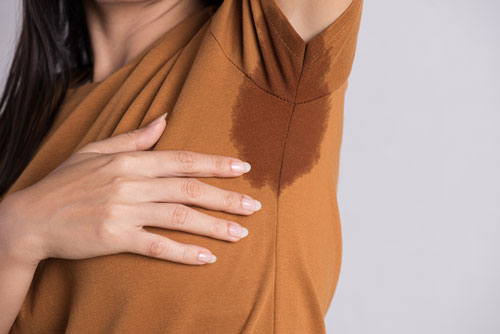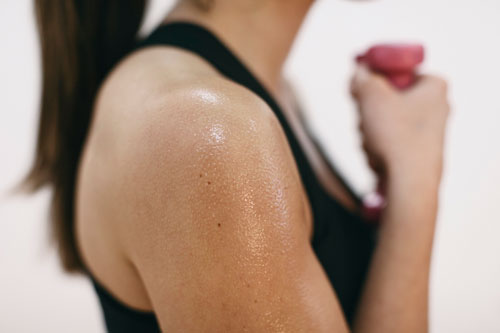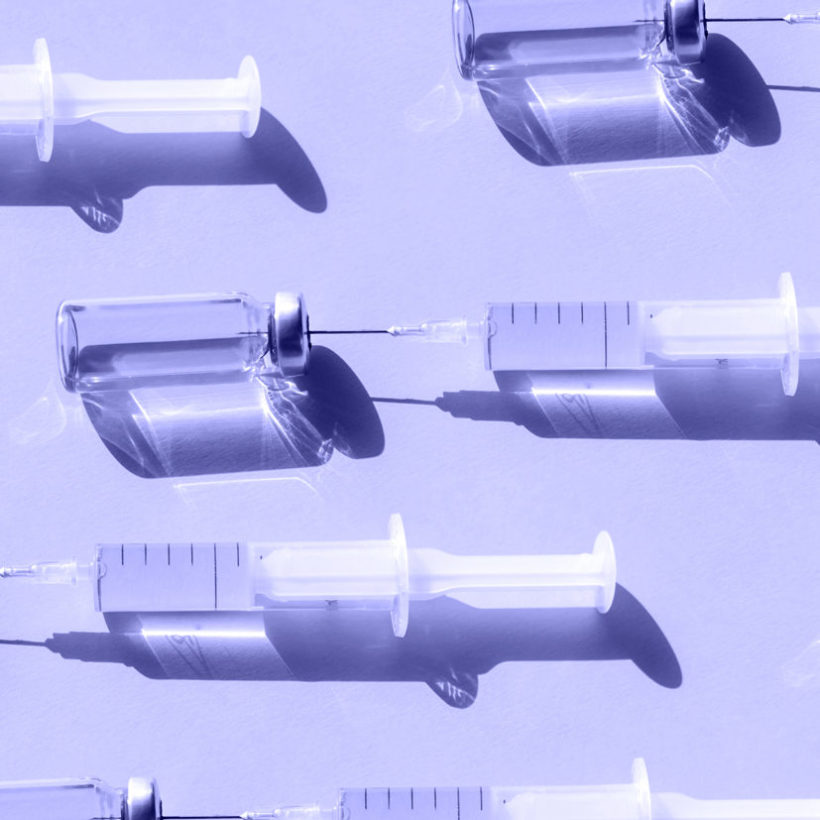By now, you’ve probably heard everything you think you need to know about Botox — an in-office injectable that “tells” your nerves to relax your muscles. It erases fine lines, prevents wrinkles, and gives the skin a brighter, firmer appearance. But as it turns out, Botox also has a super under-the-radar use that dermatologists have recommended to patients for years: It can significantly reduce sweating.
Can botox help curb sweat? The short answer: Yes. Botox blocks the chemicals in your body that signal your sweat glands to activate.
Yep — it turns out a few units of Botox can make your underarms, hands, and feet dramatically dryer during the summer (or any season, for that matter), and it usually takes just one session. Wondering how it works? Ahead, Alicia Zalka, board-certified dermatologist and founder of Surface Deep, explains everything you need to know about pursuing Botox for excessive sweating.
Botox and Sweat
Can botox help curb sweat? The short answer: Yes. While Botox was not initially formulated to aid in sweat reduction, users quickly found that this was a welcome side effect. And thus, the use of Botox specifically to treat excessive sweating was born. Today, Botox is approved to prevent sweating in the under-arm area, but there are a few “off-label” areas where your injector can still use Botox to treat sweating (more on that later). Here’s how it works: Sweat is your body’s natural cooling system — there are chemicals in your body that signal your sweat glands to release sweat when it’s hot outside or when you’re working hard (physically). Botox works by blocking these chemicals, so your body isn’t receiving the signal to make you sweat.

Is It Safe?
As far as aesthetic treatments go, Botox is considered incredibly safe by dermatologists in the hands of the appropriate provider. While you can certainly visit a medical spa to receive Botox treatments, we implore you to see a board-certified dermatologist (for Botox, or any other injectable for that matter). Board-certified dermatologists are trained on the intricate anatomy of the body — even beyond the skin. When it comes to needles going into your body, it’s not worth the risk to save money at a medical spa; you should always spring for a medical doctor to minimize risk. They will also be the best professionals to assess whether Botox is right for you. For instance, it’s not advised for pregnant or breastfeeding women to receive Botox.
With that being said, even in the hands of a dermatologist, receiving Botox for sweating does come with the slim possibility of unwanted side effects. “While Botox is one of the most popular cosmetic treatments performed worldwide and has a very safe track record and high patient satisfaction, there are always side effects to consider,” says Dr. Zalka. “The most common potential ‘adverse events’ with neurotoxin treatments can include temporary bruising, injection site redness, uneven results, swelling, headache, or ptosis — a heaviness of the eyelid that can occur when Botox is injected near the eye.”
With that being said, these side effects are infrequent and even less likely when you visit a physician than at a medical spa. Botox is less invasive than surgery, and you’ll experience minimal pain in the underarms though more sensitive areas like your feet may be more susceptible to pain.
Where Can You Treat Excessive Sweating With Botox?
Technically speaking, as far as sweating goes, Botox is only FDA-approved to treat the underarms (armpits). However, physicians can use Botox “off-label” to treat excessive sweating in various areas, including the face, palms, and the soles of the feet. While these treatments are technically “off-label,” they’re still considered incredibly safe and can be quite effective (Dr. Zalka notes that patients can expect about a 50 percent reduction in sweat gland activity.) Botox has other “off-label” uses beyond sweating that are frequently recommended by physicians, like treating TMJ and migraines.

How Long Will It Last?
Fortunately, the effects of Botox on sweating last much longer than the effects on wrinkles. Dr. Zalka notes that those using Botox to treat fine lines and wrinkles should expect their treatment to wear off in three or four months. Meanwhile, patients that seek Botox for overactive sweat glands may enjoy the effects for more than six months. And bonus: Typically, you’ll get your desired results in just one session.
The Takeaway
You heard correctly — Botox can be quite effective at reducing sweat in areas like the armpits, face, palms, and the soles of the feet. Most patients see an average 50 percent reduction in sweat in the treated area, and the results typically last six months or more. Remember that this is a medical treatment, as with any injectable. Seek a board-certified dermatologist for your treatment to experience the best results and the lowest risk of side effects. And, if you intend to use Botox for this off-label purpose, keep in mind that although research shows promising results, it hasn’t undergone the same rigorous testing as it does for its on-label usage (which is first and foremost to treat wrinkles).
We only recommend products we have independently researched, tested, and loved. If you purchase a product found through our links, Sunday Edit may earn an affiliate commission.







